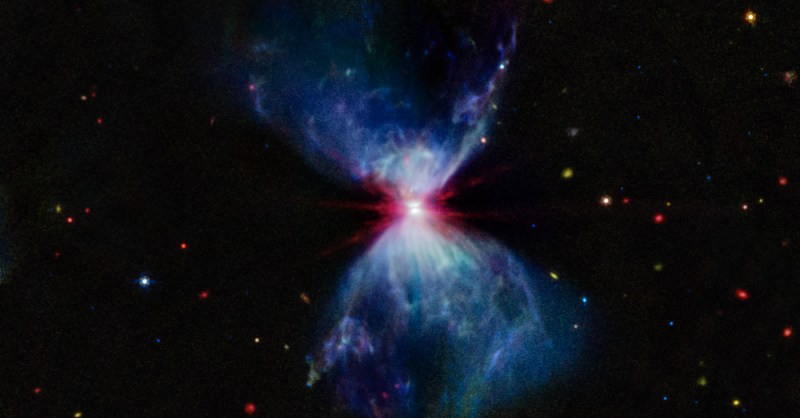James Webb Space Telescope captures magnificient new image of protostar
A stunning new image from the James Webb Space Telescope shows a young star called a protostar and the huge outflows of dust and gas that are thrown out as it consumes material from its surrounding cloud. This object has now been observed using two of Webb’s instruments: a previous version that was taken in the near-infrared with Webb’s NIRCam camera, and new data in the mid-infrared taken with Webb’s MIRI instrument.
Looking in the infrared portion of the electromagnetic spectrum allows researchers to see through clouds of dust that would be opaque in the visible light range, showing the interior structures of clouds like this one — named L1527. This image shows interior structures called filaments that are formed of compounds called polycyclic aromatic hydrocarbons (PAHs) and which are used to track star formation. In the glowing red center of the image is the hot gas and dust around the protostar, from which it is feeding to grow larger.
The NIRCam image looks very different because this wavelength shows mostly light that is reflected off the dust, while this new MIRI image shows the thickest pockets of dust. The MIRI image shows an area in white that is hard to see in the NIRCam image, which is a mixture of PAHs, ionized gas, and other material.
“The combination of analyses from both the near-infrared and mid-infrared views reveal the overall behavior of this system, including how the central protostar is affecting the surrounding region,” Webb scientists explain. “Other stars in Taurus, the star-forming region where L1527 resides, are forming just like this, which could lead to other molecular clouds being disrupted and either preventing new stars from forming or catalyzing their development.”
This beautiful sight won’t be around forever, though. Over time the protostar will continue to consume more material and push away the remnants of the molecular cloud it resides in. Then it will become a true star and will become visible in the visible light wavelength as well.
Georgina is the Digital Trends space writer, covering human space exploration, planetary science, and cosmology. She…
Source: www.digitaltrends.com


